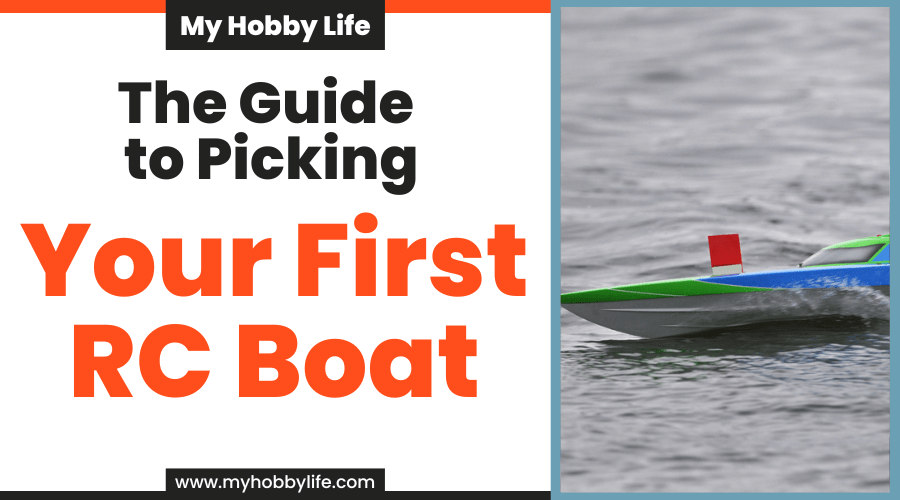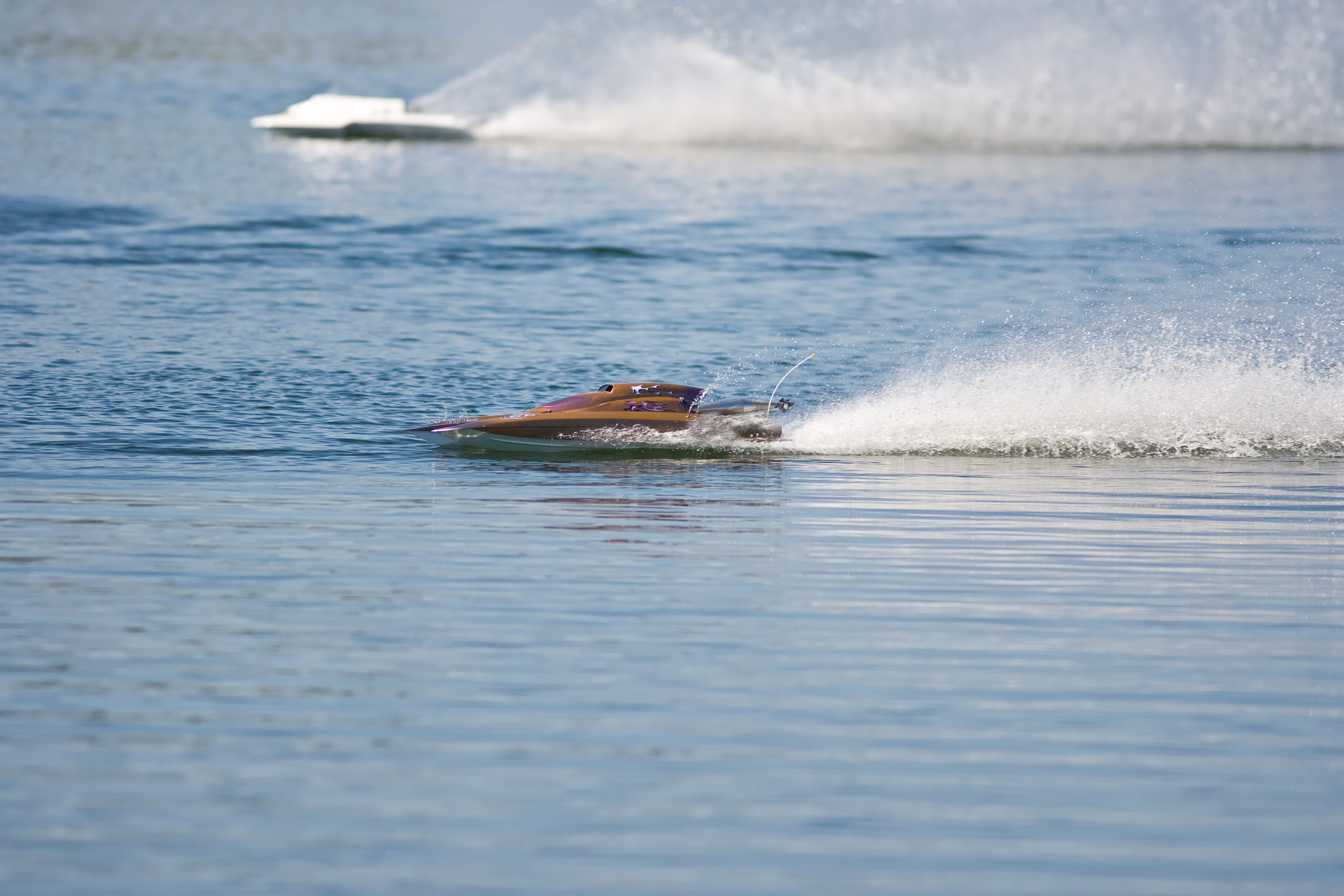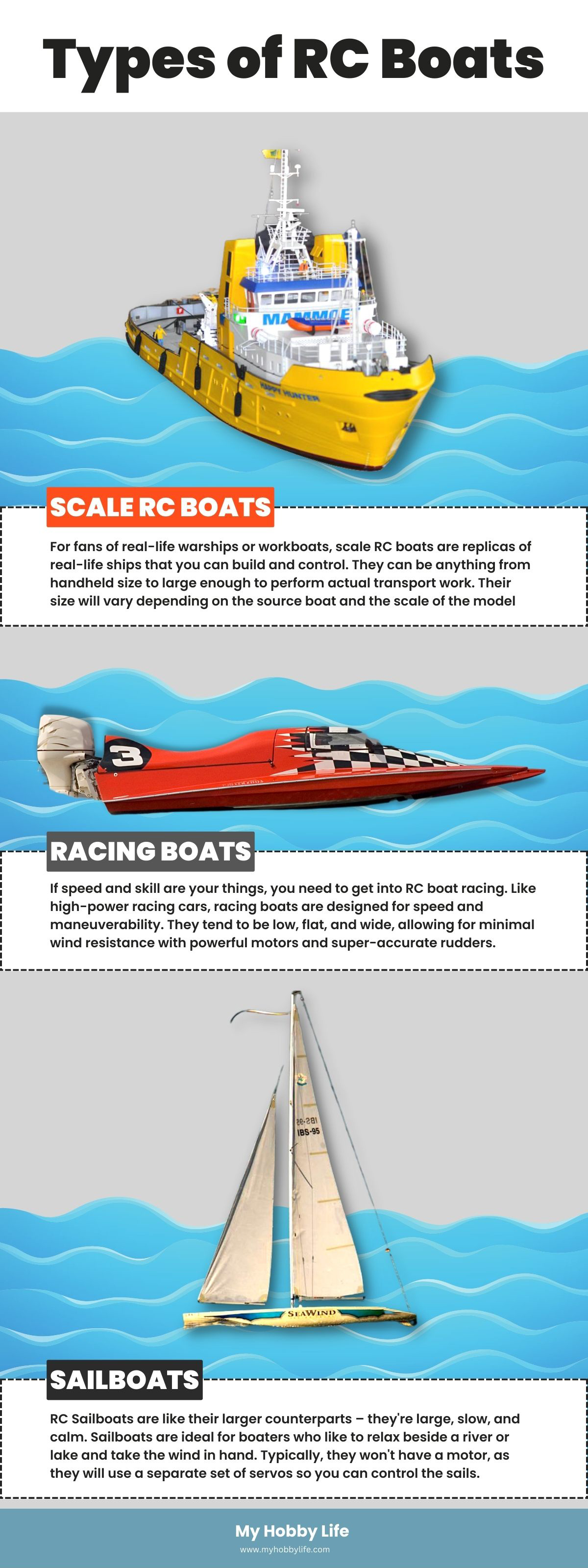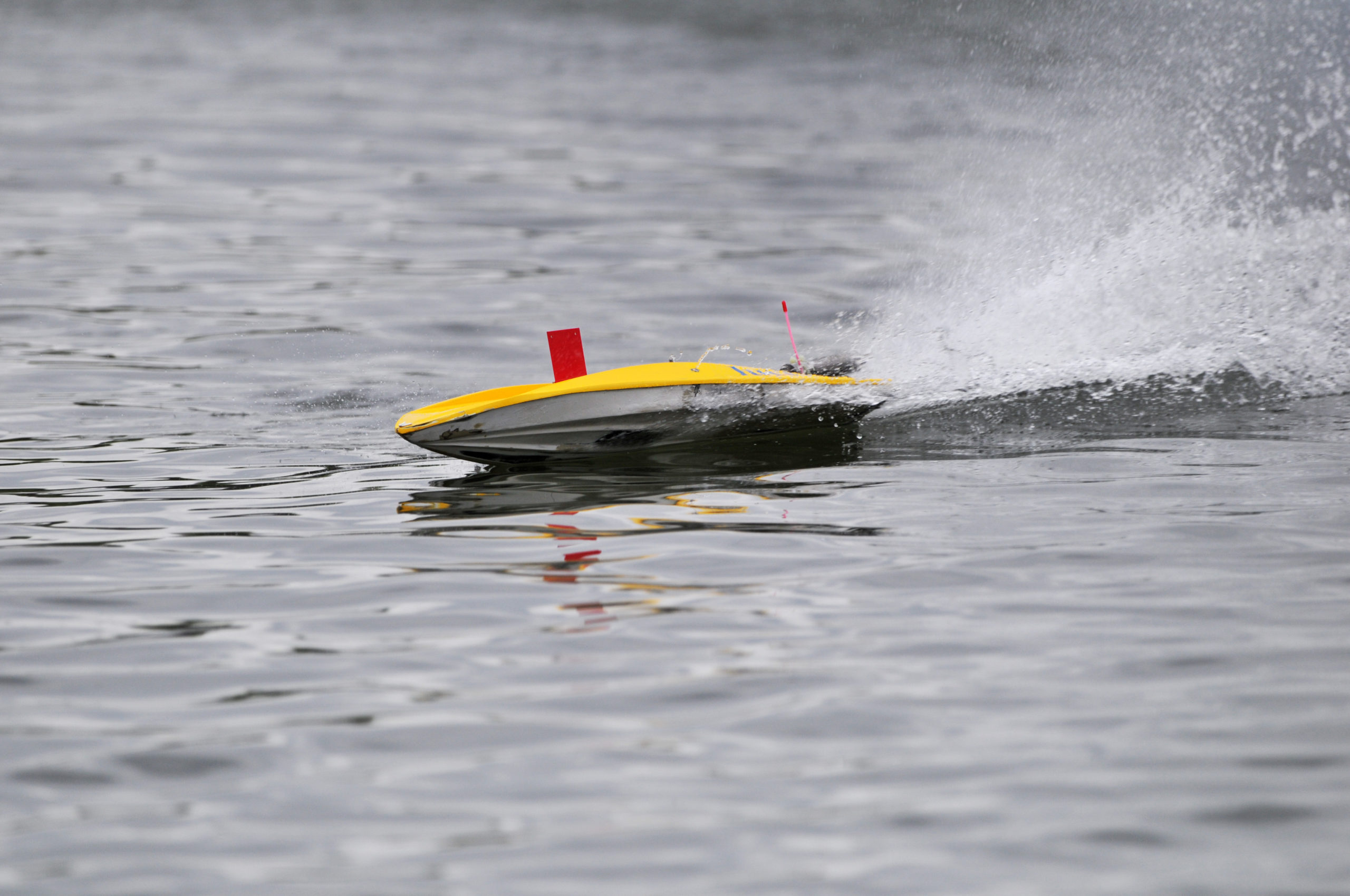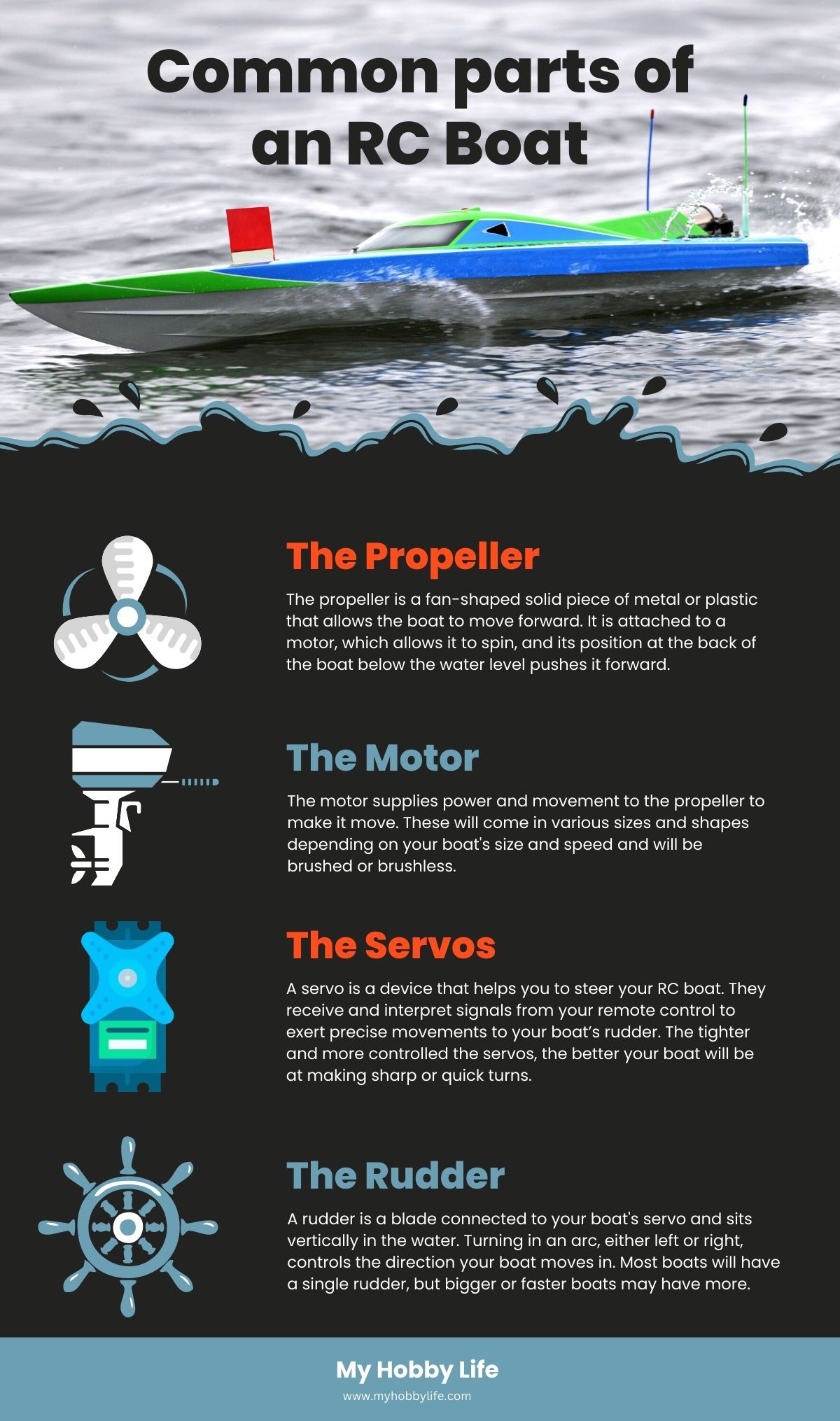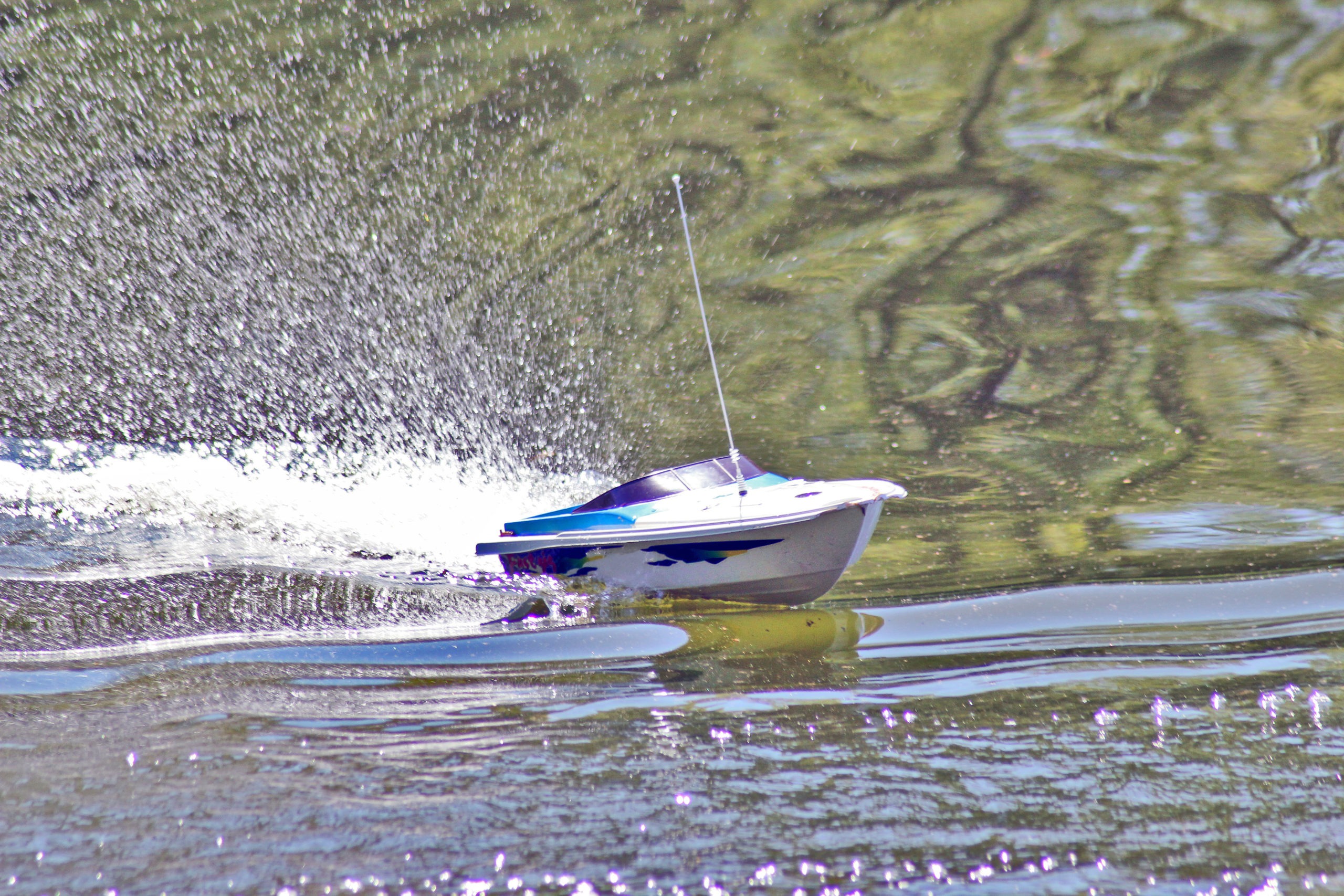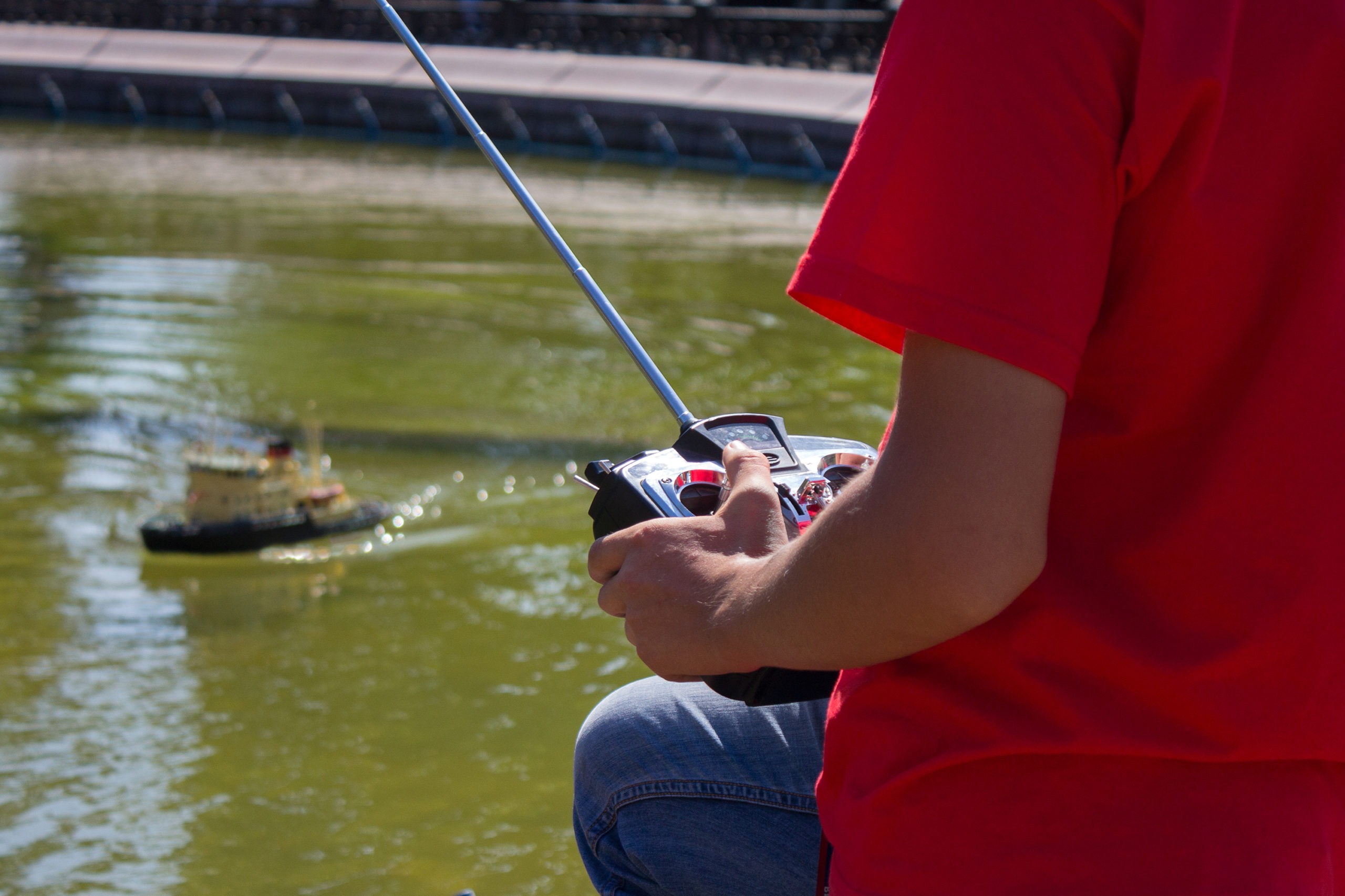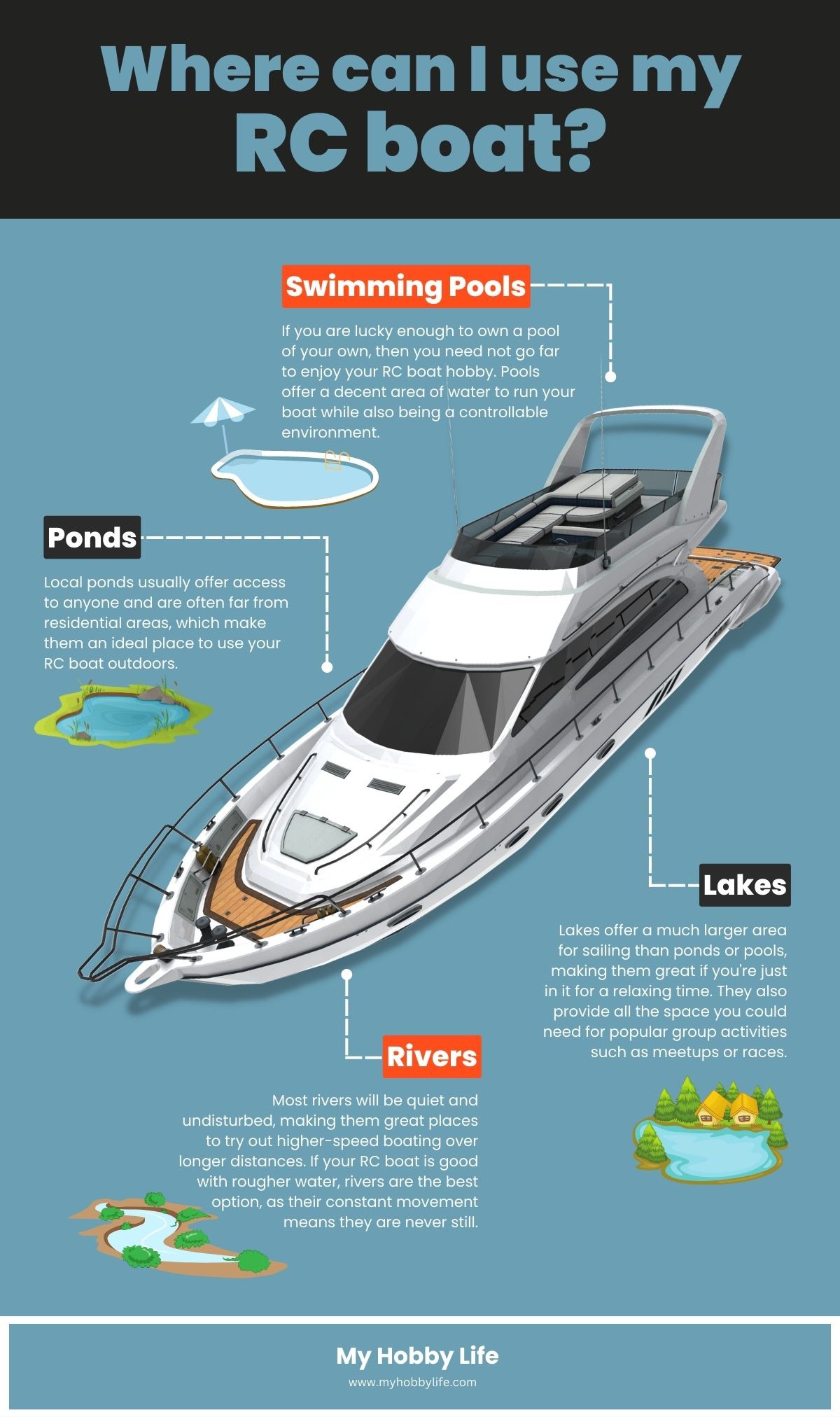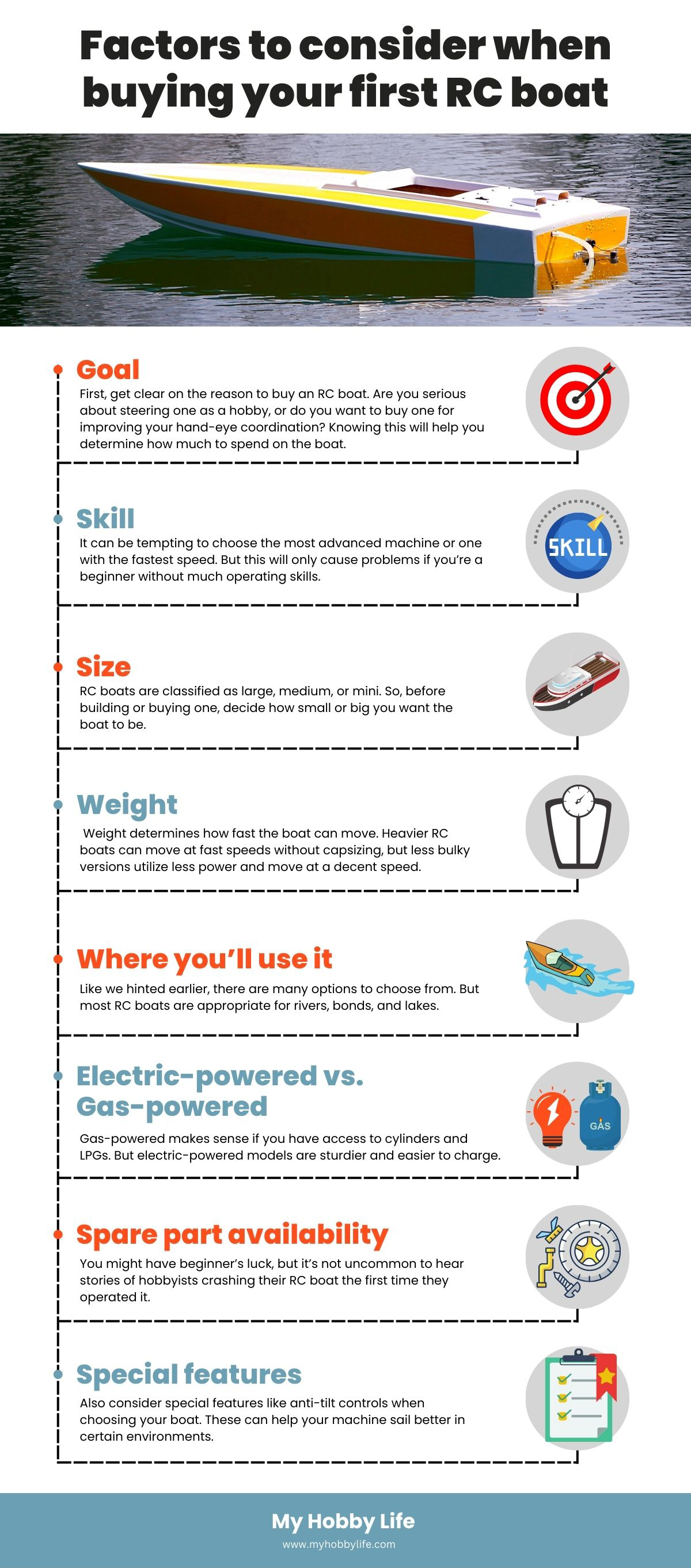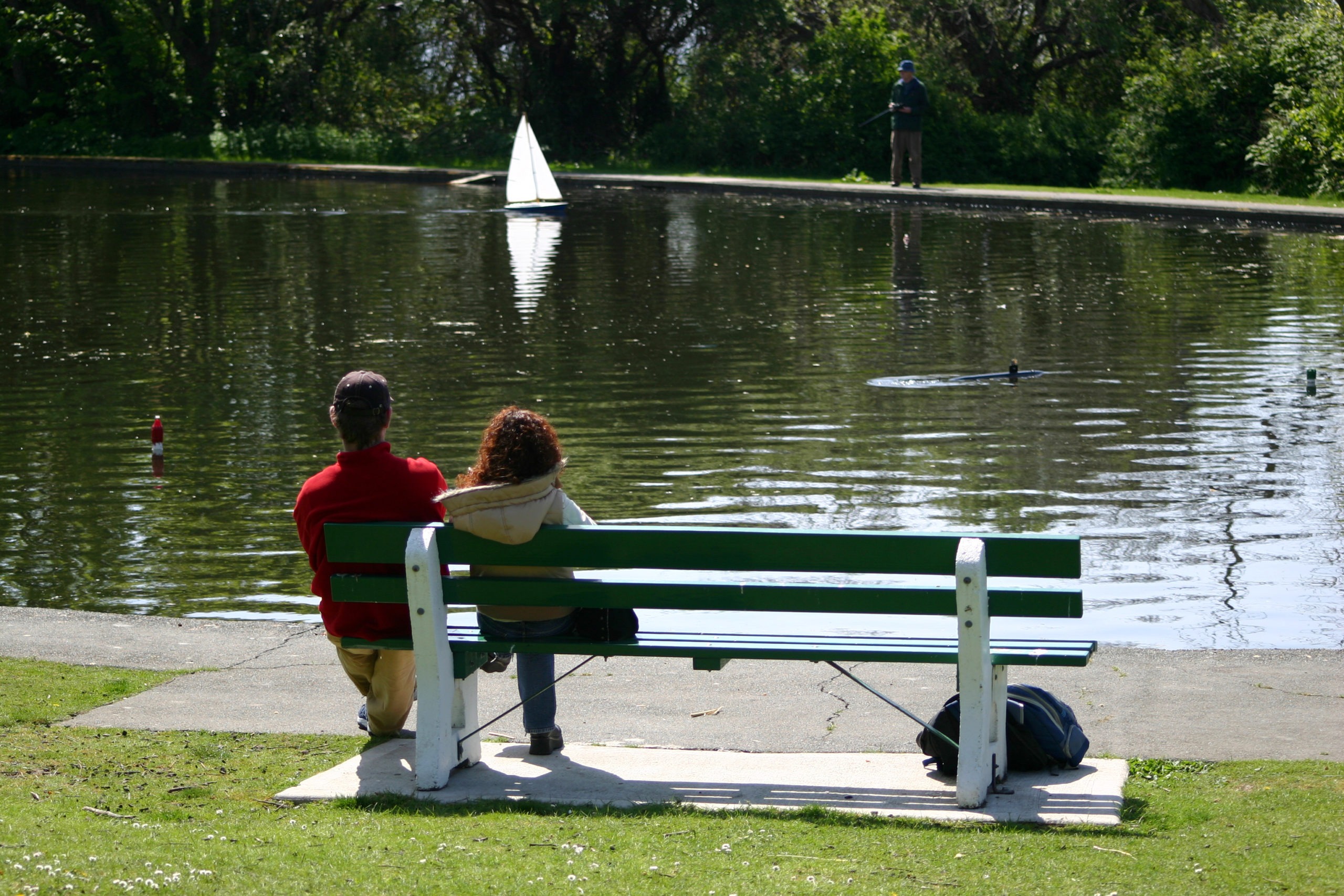Looking for a new RC toy that you could turn into a hobby? RC boats might be your best boat. They’re a fun way to spend time with family and friends and provide the opportunity to learn about different things, like motors, alarm signals, hulls, and more. Investing in an RC boat is similar to invest in a full-scale boat, just at a smaller scale.
And just like purchasing a real boat requires making a few considerations, buying an RC boat requires you to consider your personal preferences, budget, and needs. Knowing what to look for becomes even more important when you’re buying an RC boat for the first time.
The objective of this guide is to educate beginners picking their first RC boat. We’ll try keeping things simple, i.e., we’ll go easy on the technical details while still covering all the critical things that can help beginners make an informed purchase.
Why You Should Get into RC Boats
Few can match the fun and thrills of owning an RC boat when it comes to outdoor pursuits. From casual cruises on your local lakes to high-speed races down rivers and tracks, there is an RC boat for every speed.
Fans of RC boating, casual and lifetime-committed, know of the childhood joys of controlling your own boat. The controls’ simplicity makes it accessible to everyone, young and old. If you’re more technically minded, there’s as much fun to be had in sourcing and building your dream boat from an almost endless supply of customizable parts.
What’s more, even being outdoors by the water is an innately calming experience. Spending quiet, sunny days by the lake is a great way to revitalize your mind after a busy working week. Or, if you’re a more competitive sort, RC boat racing has a vibrant community of competitions and public gatherings all year round.
The best thing about this hobby is that you can get involved in DIY projects if you wish to, but you have both options: build your own or buy ready-made.
Types of RC Boats
There are three main types of RC boats on the market, and which you choose to buy will depend on the kind of fun you wish to have with them. These types are Scale, Racing, and Sailboats.
Scale RC Boats
For fans of real-life warships or workboats, scale RC boats are replicas of real-life ships that you can build and control. They can be anything from handheld size to large enough to perform actual transport work. Their size will vary depending on the source boat and the scale of the model.
The main selling point of a scale RC is that they are beautifully designed to match their real-life counterparts. They also tend to be very hardy, long-lasting, and easy to maintain. However, they also tend to be very slow compared to other boats, so if speed is your thing, then these aren’t for you.
Racing Boats
If speed and skill are your things, you need to get into RC boat racing. Like high-power racing cars, racing boats are designed for speed and maneuverability. They tend to be low, flat, and wide, allowing for minimal wind resistance with powerful motors and super-accurate rudders.
RC boat racing is a popular pastime; these boats are a great way to get involved. Their speed is their draw, and their movement is awe-inspiring. They are also designed to be used with all kinds of water, adding to the variety of racecourses. However, they are the easiest type of boat to crash, and damage is almost inevitable. They also require a high degree of power, so expect a lot of expensive battery and engine replacements.
Sailboats
RC Sailboats are like their larger counterparts – they’re large, slow, and calm. Sailboats are ideal for boaters who like to relax beside a river or lake and take the wind in hand. Typically, they won’t have a motor, as they will use a separate set of servos so you can control the sails.
Common parts of an RC Boat
Next, let’s look at what makes the boat run.
There are four main components that every RC boat needs. Without these parts, all you have is a nicely painted floating log. With them, you can make anything into a boat. These are:
1. The Propeller
The propeller is a fan-shaped solid piece of metal or plastic that allows the boat to move forward. It is attached to a motor, which allows it to spin, and its position at the back of the boat below the water level pushes it forward. Typically, they will have two to four blades and be made of plastic, brass, or stainless steel, depending on the size and shape of your boat.
2. The Motor
The motor supplies power and movement to the propeller to make it move. These will come in various sizes and shapes depending on your boat’s size and speed and will be brushed or brushless. Brushless motors are more powerful and easy to maintain but do not control as easily as brushed motors. Brushed motors are usually a cheaper option but are much easier to control.
3. The Servos
A servo is a device that helps you to steer your RC boat. They receive and interpret signals from your remote control to exert precise movements to your boat’s rudder. The tighter and more controlled the servos, the better your boat will be at making sharp or quick turns.
4. The Rudder
A rudder is a blade connected to your boat’s servo and sits vertically in the water. Turning in an arc, either left or right, controls the direction your boat moves in. Most boats will have a single rudder, but bigger or faster boats may have more.
To control these, there are three other important devices: a power source, a transmitter, and a receiver.
- Power Source – as the name suggests, this is the source of power that your RC boat needs to operate. We will look into these in more detail later.
- Transmitter – This sends radio signals from your control device to the boat. Generally, it does this between the 24 to 49 MHz frequency range, but larger boats can go as high as 75MHz.
- Receiver – The radio receiver in an RC boat registers and translates the radio signals from your transmitter and turns them into commands that your boat can execute.
RC Boat Power Sources
So what makes your boat go?
As mentioned above, your boat requires a power source to enable the engine and servos to run. There are three main types of power available: Electric, Gas, and Nitro, so which is the best for your hobby?
1. Electric Power
Electric batteries are the most common power source for RC boats. These are the most environmentally friendly and the easiest to maintain and replace. Thanks to modern advancements in batteries, you will find many small but powerful types that will give your boat the speed and power it needs. It also has no restrictions around where electric boats can be used, making it ideal for a beginner RC boater.
2. Gas Power
Gas-powered RC boats will be bigger and more powerful than others, thanks to their strong engines. A gas engine can run for a long time if properly fueled up and are easier to operate than nitro boats. They also do not struggle with larger, rougher open bodies of water. However, this source also brings the most noise, mess, and necessary maintenance to keep them going.
3. Nitro Power
Nitro power offers the fastest speeds of any type of powered boat, smoke, and realistic engine sounds for a fully immersive feel. These boats run on a special engine known as a Glow Engine. The engine uses a special mixture of nitro-methane, methanol, and oil as a fuel source, with mix ratios varying depending on the size of the engine. They are also ideal for hobbyists who love to work on their machines, as they require a lot of tuning and regular maintenance. However, this does mean they are not good for a starter or beginner hobbyist.
RC Boat Hull Types
The hull of a boat is the largest part of it, making up the shell that houses all the internal components and allows it to float. The type of hull an RC boat has will depend on its type of boat, though it is possible to mix and match if you are looking to build your own custom design. The types of hulls are:
- Monoplanes – These are sleek and nimble. They are designed to handle rougher waters and can quickly turn in either direction. However, they cannot reach the same high speeds as hydroplanes. These are the easiest to set up and one of the most popular hull types.
- Hydroplanes – These are wide, stable, and fast. They cut neatly through still water and can make sharp turns in one direction.
- Outrigger Hydroplanes – The best boat hull for fast and highly-controllable turning. Ideal for racing boats but much harder to set up if you’re just starting out.
- Catamarans – Another beginner-friendly hull type, catamarans are quick and easy to use on choppy waters.
- Tunnel Hulls – These offer fast movement and multiple-directional turning; however, they are impractical for rough or deep water. Only for use on calm, shallow lakes or rivers.
RC Boat Materials
A variety of materials are used to make the RC boats being sold in online and offline stores. The most popular hull materials are:
-
ABS Plastic
Durable, light, cheap—these three qualities make ABS plastic the material of choice for many RC boat manufacturers. Some of the fastest RTR boats (like Traxxas Spartan) out there feature plastic hulls, because the material makes for great fun running.
-
Fiberglass
Fiberglass provides a fantastic paint finish and comes in a variety of flexibilities and thicknesses tailored to different boat designs. It’s most suitable for gasoline or Nitro boats—it holds up well against fuel spills unlike plastic. Plus, the material has the benefit of being reparable.
-
Carbon Fiber
The most premium material for RC boats, Carbon Fiber is used by top brands for premium manufacturing. However, the material is expensive, and if the carbon fiber hull breaks down, there’s no way to repair the damage.
Here’s a summary of how the materials play out:
Material | Can It Be Repaired? | Price |
ABS Plastic | Yes | $ |
Fiberglass | Yes | $$$ |
Carbon Fiber | No | $$$$$ |
Where can I use my RC boat?
Unfortunately, not all boats are allowed to be sailed in every kind of water. You will have to keep in mind where you wish to spend most of your hobby time while deciding which boat to buy.
Swimming Pools
If you are lucky enough to own a pool of your own, then you need not go far to enjoy your RC boat hobby. Pools offer a decent area of water to run your boat while also being a controllable environment. The best thing is: if you accidentally sink, it won’t be hard to rescue your boat again.
However, this only applies to private pools. While some public pools may have agreements with a local RC boat club, most will not allow RC boats.
Ponds
Local ponds usually offer access to anyone and are often far from residential areas, which make them an ideal place to use your RC boat outdoors. They also tend to be relatively calm, making them an ideal place for beginners to learn the ropes of RC boating with minimal interruption.
Rivers
Most rivers will be quiet and undisturbed, making them great places to try out higher-speed boating over longer distances. If your RC boat is good with rougher water, rivers are the best option, as their constant movement means they are never still. However, this also means that they are unsuitable for boats that can easily take on water or capsize. Sailboats and the like are best kept off rivers unless you want to spend most of your time wading in to rescue them.
Lakes
Lakes offer a much larger area for sailing than ponds or pools, making them great if you’re just in it for a relaxing time. They also provide all the space you could need for popular group activities such as meetups or races. Their unpredictable nature means you’ll be better off with RC boats that can handle the occasional choppiness. Retrieving a sunken boat from a lake can be much harder than a pond or a river, so ensure that yours can tolerate it.
Factors to consider when buying your first RC boat
There’s more to choosing an RC boat than sleek looks and ultra-fast speed. To ensure you get value for money, here are some considerations budding hobbyists should make.
- Goal: First, get clear on the reason to buy an RC boat. Are you serious about steering one as a hobby, or do you want to buy one for improving your hand-eye coordination? Knowing this will help you determine how much to spend on the boat.
- Skill: It can be tempting to choose the most advanced machine or one with the fastest speed. But this will only cause problems if you’re a beginner without much operating skills. Go for a user-friendly RC boat instead, then upgrade to a more advanced one after you’ve gained some operating skills.
- Size: RC boats are classified as large, medium, or mini. So, before building or buying one, decide how small or big you want the boat to be.
- Weight: Weight determines how fast the boat can move. Heavier RC boats can move at fast speeds without capsizing, but less bulky versions utilize less power and move at a decent speed. Again, the choice depends on your personal preference.
- Where you’ll use it: Like we hinted earlier, there are many options to choose from. But most RC boats are appropriate for rivers, bonds, and lakes.
- Electric-powered vs. Gas-powered. Gas-powered makes sense if you have access to cylinders and LPGs. But electric-powered models are sturdier and easier to charge. The right choice depends on the source you prefer.
- Spare part availability: You might have beginner’s luck, but it’s not uncommon to hear stories of hobbyists crashing their RC boat the first time they operated it. So it’s better to be safe by getting a boat whose spare parts are easily available. You might even consider going second-hand when getting started.
- Special features: Also consider special features like anti-tilt controls when choosing your boat. These can help your machine sail better in certain environments.
Building Your Own vs. Ready-Made Boats
If you understand the mechanics behind how RC toys work, you might be able to build your own boat. Taking this approach gives you the freedom to be as creative as you want. However, you’ll need to invest in an RC modeling toolkit and choose the correct motor diameter.
Speaking of the motor diameter, make sure it suits the size and weight of the hull you plan to run. Here’s a table offering some ranges:
Motor diameter | Hull |
28-29mm | Up to 600mm |
36mm | Around 800mm |
40mm | Up to 1200mm (abs or light brushless) |
56-68mm | 1200m+ |
Besides this, make sure to look at the KV (RPM per volt). Here are the typical SAFE operating RPMs for different motors:
Motor diameter | Safe Working RPM |
36mm | 40,000-45,000 rpm |
40mm | 35,000-40,000 rpm |
58mm | 28,000-30,000 rpm |
As you can see, there are a lot of technicalities that go into building your own RC boat. So if you’re looking to get sailing quickly, it would be best to buy a ready-made version.
Top RC Boats to Buy
Below are the best RC boats available in the market. All of them are ready-made, meaning you should be able to use straight out of the box.
1. Altair AA102 – Best RC Boat for Beginners
Key features:
- Ideal for adults and kids
- Anti-Capsize Hull System
- Low battery alarm
Often cited as the best RC boat for hobbyists, Altair AA102 comes with a self-righting feature that makes it extremely simple to operate. It also has fast speeds of up to 24 mph, meaning you’re unlikely to stay behind in a race. Plus, it’s equipped with an out-of-range alarm to ensure it’s never standard on the water.
2. Force1 Velocity H102 – Budget Remote Control Boat
Key features:
- Speeds of 20mph+
- Best RC boat for budget-concious
Offering the best bang for your buck, the Force1 RC boat is available two colors. A brushless motor is installed to help it pick up speed—the boat can reach over 20 mph with no issues. Moreover, the boat comes with low-signal warning, which informs buyers before they reach their max range.
3. Pro Boat Stealthwake – Best RC Boat for Fun Racing
Key features:
- Pro Boat 2.4GHz marine radio system
- Boat stand inside
- 60A Li-Po ready ESC
This razor-sharp boat can turn heads in a jiffy. When the day calls for style, precision, and speed, Pro Boat Stealthwake answers. It’s ideal for fun racing and features a hull made durable ABS plastic. Take this boat to competitions or enjoy on some fast action on a river or lake.
4. BEZGAR TX121 – Best RC Boat for Pools and Lakes
Key features:
- Water-sensing design
- Water-proof hatch
- Smart 2.4Ghz long distance remote control
When it comes to functionality, it’s hard to go wrong with BEZGAR TX121. It features fancy LED lights that let you see the boat’s direction in low light. Then we also have a water-cooling system, meaning the boat’s engine starts only when it comes contact in water. Moreover, low battery warning is also there to help you charge the boat timely.
Buying New vs. Used
Thinking of purchasing a used RC boat? It’s not a bad idea if you know where to buy. Those RC boats advertised on Craigslist have probably reached the end of their life and the owner is just trying to earn from a dead hobby toy. Those with very little knowledge about RC boats can easily get scammed, so the option of purchasing a used RC boat makes sense for experienced hobbyists rather than beginners.
And if you get lucky enough to find a good piece, remember that it’s unlikely to have a manufacturer’s warranty. Buying a new RC boat costs more, but you get peace of mind that you’re not investing your hard-earned money on something that might stop working tomorrow. What might be brand new a few years ago might be obsolete today. Remember, RC toys have a finite life.
Level of Completion
RC boats have several levels of completion. Read the description of the boat you’re considering to find out the level, and the make an appropriate buying decision.
ARR or RTR
ARR or RTR (Almost Ready-to-Race or Ready-to-Race boats are ready to use right out of the package. In other words, their box includes the battery, charger, and control system, making them ideal for beginners.
PNP
(Plug-and-Play) catamarans and radio-controlled boats aren’t packed with controllers, receivers, chargers, or batteries. Although they’re cheaper in buy, you’ll need to arrange your own accessories to sail them in water.
KIT
The KIT version of RC boats is unique and often recommended for experienced hobbyists.
Maintaining Your RC Boat
You must perform regular maintenance if you want your RC boat to remain in tip-top condition for each use. The amount of maintenance you need to perform will vary depending on the type of boat you own. Gas and nitro-powered boats will need regular engines and fuel pump maintenance to keep running smoothly. Replacements will also need to be made on almost every model boat in time.
However, regardless of your boat, there are some basic maintenance steps you should always perform after each use. Doing these will keep your boat running for a long and fruitful life.
1. Give your boat an inspection before every use.
Make sure you give your boat a once-over each time you spend a chilled afternoon out on the water. Make it a habit that comes with every trip. Check the rudder, motor, and power source for any signs of wear and tear. If it all runs, you know you will not face problems when you get to the water. Give it a quick clean as well. Ensure there are no leftover pieces of weeds or dirt from your last outing.
2. Recharge and replace batteries often, and keep the tank full
The last thing you want is to get to the lake, set your boat off, and find it dead in the water two minutes later. Give batteries time to charge before you go, and ensure the fuel is topped up before you set off. It’s better to have too much with you than to run out when your boat is in the deepest part of the lake.
3. Dry and clean your boat after every trip
It stands to reason that making sure your boat is fully dried when you put it away is how it should be, but you’d be surprised how many people forget. Like with your pre-trip routine, make it part of your pack-up to give your RC boat a good dry down, cleaning off any dirt or debris it may have picked up. This will stop any mold or other growths from taking hold and prevent rust or degradation on exposed pieces of metal or wiring.
Troubleshooting RC Boat Problems
Your first time taking your RC boat for a spin might seem daunting, but you’ll be surprised how easy it really is! However, this doesn’t mean you won’t come across a problem here or there. Here we have a few of the most common issues first-timers encounter and the easy ways to fix them.
My engine won’t start!
The most common issue that stops the fun on your first outing with your shiny new RC boat is that it doesn’t start when you turn it on. Before taking it back to the shop, there are many steps you can take to solve this simple issue, such as:
- Check your fuel source – did you put enough gas or nitro in? Are the batteries correctly installed? Is anything obstructing the battery’s connection?
- Check the air filters – if your boat has air filters, ensure they are clear of debris or other blockages.
- Check fuel lines – if the fuel lines are blocked, pinched, or not even connected, then they won’t be feeding fuel to the engine.
- Check the transmitter – are the batteries in the transmitter installed correctly? Are there any shorts in the wiring?
My boat isn’t accelerating!
The faster your boat, the quicker it should go. Sailboats go only as fast as the wind allows, but racing boats are chosen for their speed. You’d expect them to get fast, quick. If your boat isn’t blasting along as fast as it should, you’ll need to check that the propellers aren’t being obstructed. For gas-powered boats, look for carbon deposits in the engine that might obstruct the power output.
There’s radio interference interrupting my controls!
Since most transmitters run on the same frequencies, it becomes more likely to occur as more transmitters show up. This is more likely to happen as more boaters gather. Unfortunately, there isn’t much you can do about this other than move away from other users or ask that they stop so you can take a turn. However, you can still check that the transmitter is safely wrapped in its dampening foam, as this can affect whether interference is a problem in the short term.
FAQs
1. Where Can I Find Myself an RC Boat?
Hobby stores and specialist websites will cater to every form of RC model, boats included. Buying them online is usually the cheapest option; however, seeing them in-store gives you a better idea of the boat itself. Plus, you get the option to discuss your new hobby with another hobbyist in-store.
2. How Much Will an RC Boat Set Me Back?
Basic or beginner RC boats can cost as little as $20, but you will pay more for more specialized ones. A good racing boat can begin at $50 – $200, while high-quality scale-model RC boats can be anywhere between $100 and $600.
3. Where Can I Sail My RC Boat?
Lakes, rivers, and local ponds are all great places to while away the hours sailing your new RC boat. If you can’t get that far, running one in your (or a friend’s) pool is perfectly good!
4. Will My Boat Ever Sink?
Much like real boats, if they are maintained and used properly, you won’t find yourself having to retrieve your boat from the depths. Just make sure you sail your boat on appropriate water and look after the hull.
Conclusion
The key considerations when buying your first RC boat is where you want to use it, how much cash you are willing to spend, and how much time you are willing to invest in the hobby. Ready-to-Run boats are an excellent choice for those who want to get started without worrying about assembly, while Plug-And-Play works for those who have got some time on their hands.
Regardless of the type of RC boat you intend to buy, buy from a brand that offers a warranty on the product. Avoid buying without warranty because you’ll end up paying a lot in spare parts. According to our research, the Altair AA102 RC boat is a great choice for beginners, but it’s hard to get hand so you’d be lucky if you manage to get it for your hobby.
